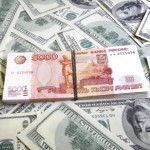Grain futures were mixed on Wednesday with corn and wheat tumbling more than 1%, while soybeans remained fairly unchanged but still traded lower.
On the Chicago Board of Trade, corn futures for September delivery traded at $5.3713 per bushel at 12:17 GMT, down 1.37% on the day. Prices ranged between daily high of $5.4363 and and low at $5.3513 a bushel, the lowest since July 9. The grain settled more than 2.5% lower on Friday, the biggest daily drop this month, but still closed the week 3.32% higher.
DTN said on July 12 that parts of the Midwest might have near to below-normal rainfall later this week and hot weather may cease for several days.
Luke Mathews, a commodity strategist at Commonwealth Bank of Australia, wrote in a report today: “The better weather forecast meant traders focused on Thursday’s modestly bearish USDA WASDE report which included a surprise upward revision to U.S. corn inventories.”
The U.S. Department of Agriculture said yesterday that stockpiles in the world’s biggest producer will total 1.959 billion bushels by the end of the 2013-2014 marketing year, up from last month’s forecast of 1.949 billion bushels and doubling last years inventories. Analysts expected the USDA to cut its corn outlook by 3.5% to 1.874 billion bushels, but it was increased due to reduced demand outlook from livestock farmers and importers.
The agency confirmed expectations for reduction in the total output to 13.95 billion bushels, down from 14.005. However, this is still an all-time record high.
As for the corn crop condition, the USDA reported it is a lot better than 2012. As of July 7, only 8% of the crop was categorized as “Very poor” and “Poor”, 24% was “Fair” and 68% was of “Good” and “Excellent” qualities. In comparison, during the same week last year, 36% of the crop fell in the “Very poor” and “Poor” categories, 30% in “Fair” and 40% was categorized as “Good” and “Excellent”
Wheat drops as well
Meanwhile, wheat also marked a significant daily loss, standing at $6.7013 per bushel at 12:19 GMT, down 1.48% on the day. Prices held in range between days high and low of $6.7763 and $6.6850 a bushel respectively. The grain remained almost unchanged on Friday but settled the week 3.2% higher as prices drew support by increased demand from countries filling stockpiles, attracted by lower prices.
The U.S. Department of Agriculture said last week U.S. wheat reserves will total 576 million bushels at the end of the current marketing year on May 31, down from previous months estimate at 659 million bushels.
Analysts expected the agency to cut its forecast to 624 million bushels. The USDA said it expects exports to be 100 million bushels higher this year than previously forecast due to “strong sales, particularly to China”. U.S. export sales rose to 1.47 million tons in the week ending July 4, twice more than the previous week, as China purchased 1.02 million tons of wheat.
Last week, Japan’s Ministry of Agriculture, Forestry and Fisheries said yesterday the Asian country bought 23,963 metric tons of club wheat grown in Washington state, 1,497 tons of Australian premium-white, 1,710 tons of U.S. soft-red winter and 22,784 tons of western-red-spring wheat from Canada.
Soybeans fairly unchanged
Soybeans swung between gains and losses on Monday but remained fairly unchanged during late European trading. Soybeans for August delivery traded at $14.2850 at 12:18 GMT, down 0.03% on the day. Prices held in range between days high and low of $14.3188 and $14.1975 per bushel respectively. Futures fell more than 3% on Friday, marking the worst daily loss since the beginning of June, and settled the week 0.28% lower.
Last week, the USDA raised its forecast for domestic inventories to 295 million bushels as of August 31, surpassing analysts expectations for a rise to 270 million bushels. This was 11% higher than the previous months projection for 265 million bushels.
As for the soybeans condition, the government agency reported it was a lot better than last year’s. This year, 7% of the crop was categorized as “Very poor” and “Poor”, 26% was “Fair” and 67% was “Good” and “Excellent”. As of July 7, 2012, 27% of the crop was of “Very poor” and “Poor” quality, 33% was “Fair” and the remaining 40% was of “Good” and “Excellent” quality.





